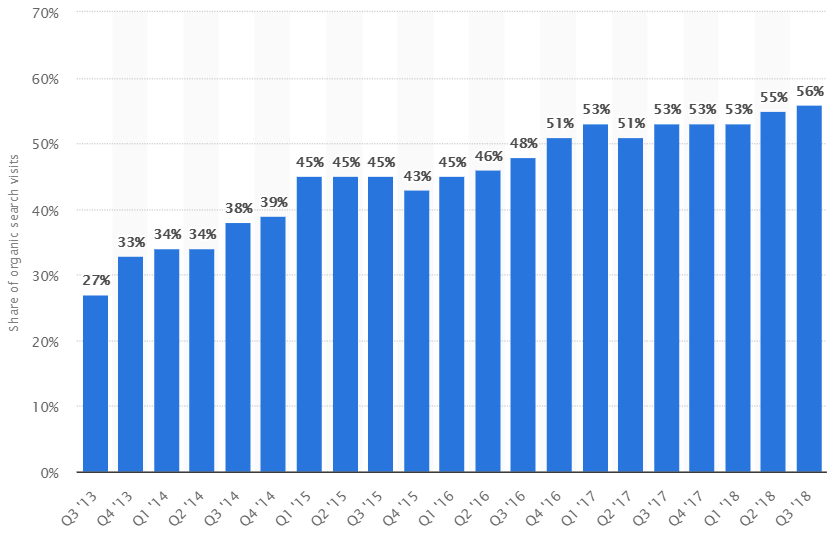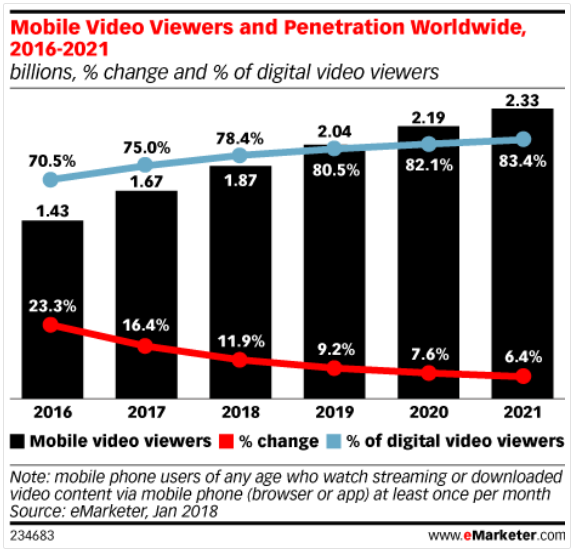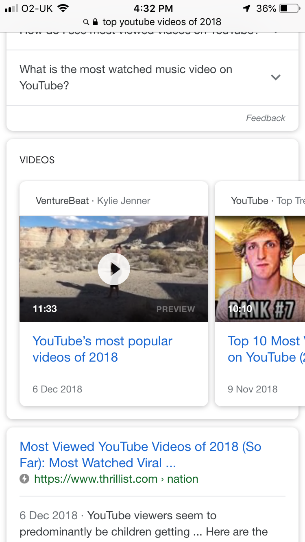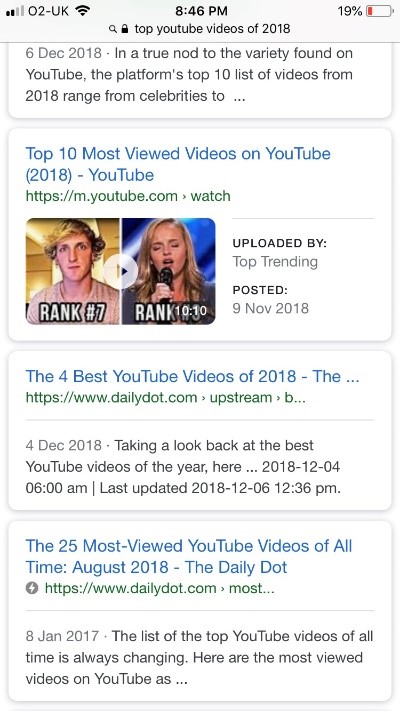Here at Search Engine Watch we know that video content is a great way to achieve and maintain visibility online, as well as being a successful means for providing engaging content for followers and prospective customers.
A quick look at our Twitter feed is testament to that.
Last month I argued that YouTube channels could – and should – be optimized in much the same way as our videos and websites.
And Ann Smarty’s 5 YouTube optimization tips to improve your video rankings is worth a look if you want to ensure your videos are really sticking out from the crowd.
But in 2019 are there any other considerations for ensuring that our videos are visible?
We know that Google frequently tweaks its algorithm and we should assume that YouTube does too. We also know the habits of searchers and viewers change as time passes.
Today I want to turn our attention to video search visibility in the mobile context. After all, most of our search activity is mobile and most of our video viewing activity is as well. How should this affect the way we approach SEO for our video content?
How much search activity is mobile?
US-centric statistics from Statista show just how much the mobile share of organic searches has grown in the past few years.
During Q3 2013 27% of searches were made on mobile compared to 73% on desktop, but by Q3 2018 things were firmly weighted the other way.
Now, at least 56% of searches are being accounted for by mobile.

How much video viewing is mobile?
With more search activity happening on mobile, can we expect the same of video activity? The short answer is: yes.
According to eMarketer, more than 80% of video viewing is expected to be on mobile in 2019.
This is up 10% in just three years and it looks like it will keep growing.

YouTube videos on Google – differences between desktop and mobile
So with more people searching for, and viewing, video on their handheld devices, do we need to think a little differently about how we optimize this content?
It seems logical that Google might present video differently on mobile compared to desktop. But initial differences appear to be very small – at least for the search phrase I use as an example here, ‘top youtube videos of 2018.’


On both desktop and mobile, the video results for this keyphrase appear presented in a carousel in around position 3 of the SERPs. Position 1 is given over to an infobox taken from an AdWeek ‘top 10’ style article and position 2 is a ‘People also ask’ box.
The first three videos that are viewable in this carousel are the same across devices – the leftmost being an embedded video in a VentureBeat article and the others being from YouTube. So Google might not be ranking things particularly differently depending on whether we search from desktop or mobile. But one instantly noticeable difference is the need to click (to scroll through the carousel) once on mobile in order to view the rightmost result and even half of the central result. In this case, the VentureBeat video certainly wins on instant visibility.
Another recent feature Google is including for video in its mobile SERPs is the preview
If a user scrolls to the video carousel and stops momentarily, the video begins to play silently showing selected moments. If we compare this to desktop – where the videos are static until played – mobile video SERPs are perhaps less likely to be clicked upon depending on the thumbnail it has.
The lesson for content creators here is to ensure the visual quality of your video is good throughout – you can’t simply depend on your colorful custom thumbnail to get these kinds of clicks.
While the video carousels in the Google SERPs are very similar on desktop and mobile, there are other ways video is presented which are notable.

This mobile video listing appears in-line with the text results much the same as a conventional desktop listing.
Note that it doesn’t include the video’s description, rather opting to show who has uploaded the content and when it was posted. Subsequently, the title and thumbnail are massively important for indicating to the user that this content is relevant to them. But the name of the channel and the freshness of content will also help that decision be made.
In this case, ‘Top Trending’ as a brandname is itself very relevant for our query – and we can also see how fresh the content is.
YouTube videos on YouTube – differences between desktop and mobile
So how do things fair when searches are made on YouTube?


Again, differences are subtle. Buy they are there. Ranking-wise we still see the videos we are familiar with from the earlier Google search and they are much the same across devices.
As we might expect, though, the mobile display of YouTube.com eschews video descriptions choosing to show the thumbnail aside the title, channel name, number of views and the age of the content.
Titles are also truncated if they exceed a certain length.
In this example, our second result loses nearly half of its character count of 57 down to 34.
App vs. mobile web differences
With the growth of mobile viewing habits, it also pays to see how things potentially differ on mobile apps too.
When it comes to the SERPs as a whole, we can see the YouTube app does a better job at displaying more results above the fold – showing five full thumbnails.
In our example we can also see the app does a better job at utilizing the space next to the image – with bigger fonts and less severe editing of longer titles. The YouTubers React… video still loses some of its overlong title, but only around 5 characters.
Takeaways
It’s important to remember this isn’t a comprehensive study. Different searches may produce different results. And allowances need to be made for the diversity of size and display of mobile devices (my examples were viewed on iPhone 7).
That said, I do think certain elements of video optimization deserve more consideration in the mobile context than they do in desktop.
Here’s my hotlist:
1. Titles
Always an important aspect of video SEO. But on mobile, we need to be wary that titles are more likely to be truncated in results across mobile web and app. Try to keep them concise and with the most important aspect of the title within the first 30 characters.
2. Previews
Thumbnails are still massively important, but the use of previews on mobile is an extra thing for video content producers to consider. Is your lighting good and consistent throughout? Simply, does your whole video looks good? Because, on mobile, users may or may not make a click depending on this preview.
3. Channel brand
While mobile SERPs often tend to lose video descriptions, the channel name on which the video is published is always included – and often fairly prominently. Even if you channel name is not massively well known, is it clearly relevant for the words/phrases you want your video(s) to rank for?
4. Freshness
Similar point to the above. The date or age of the content is always visible across Google, YouTube, desktop, mobile web and app. Ensure you are updating fresh content to your channel. Mobile users can clearly see if things are out of date.
The post Mobile search and video in 2019: How visible are you? appeared first on Search Engine Watch.
source https://searchenginewatch.com/2019/01/28/mobile-search-and-video-in-2019-how-visible-are-you/
No comments:
Post a Comment